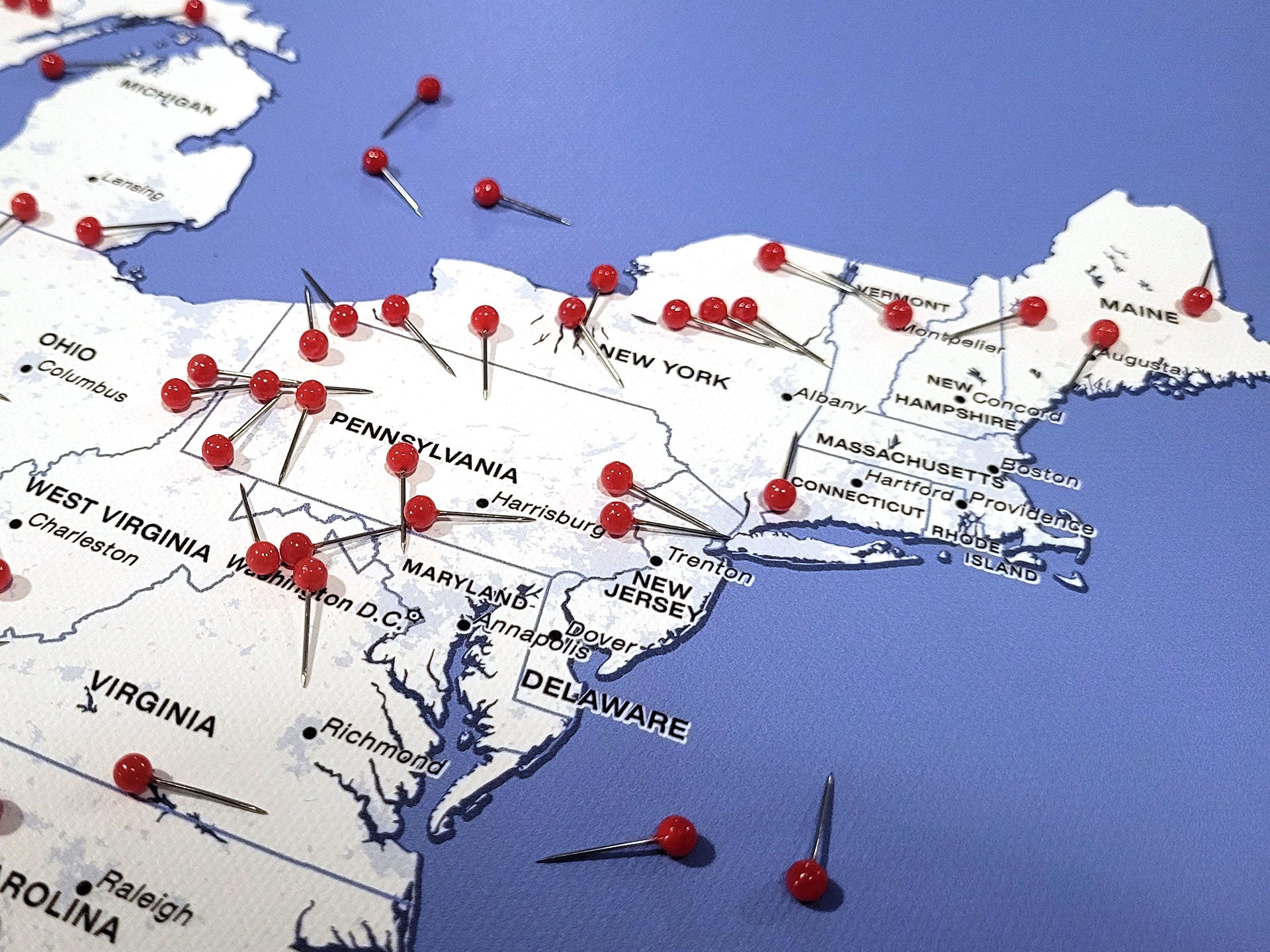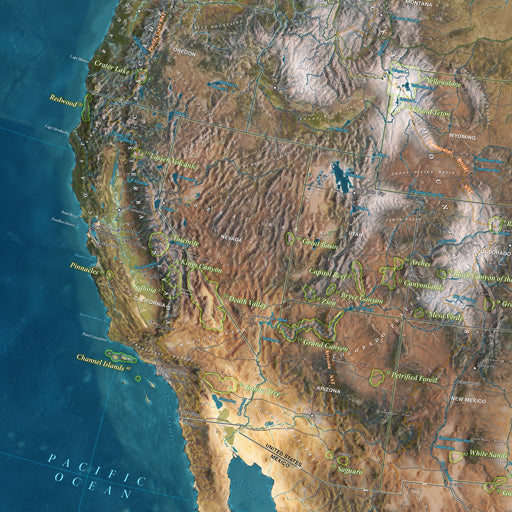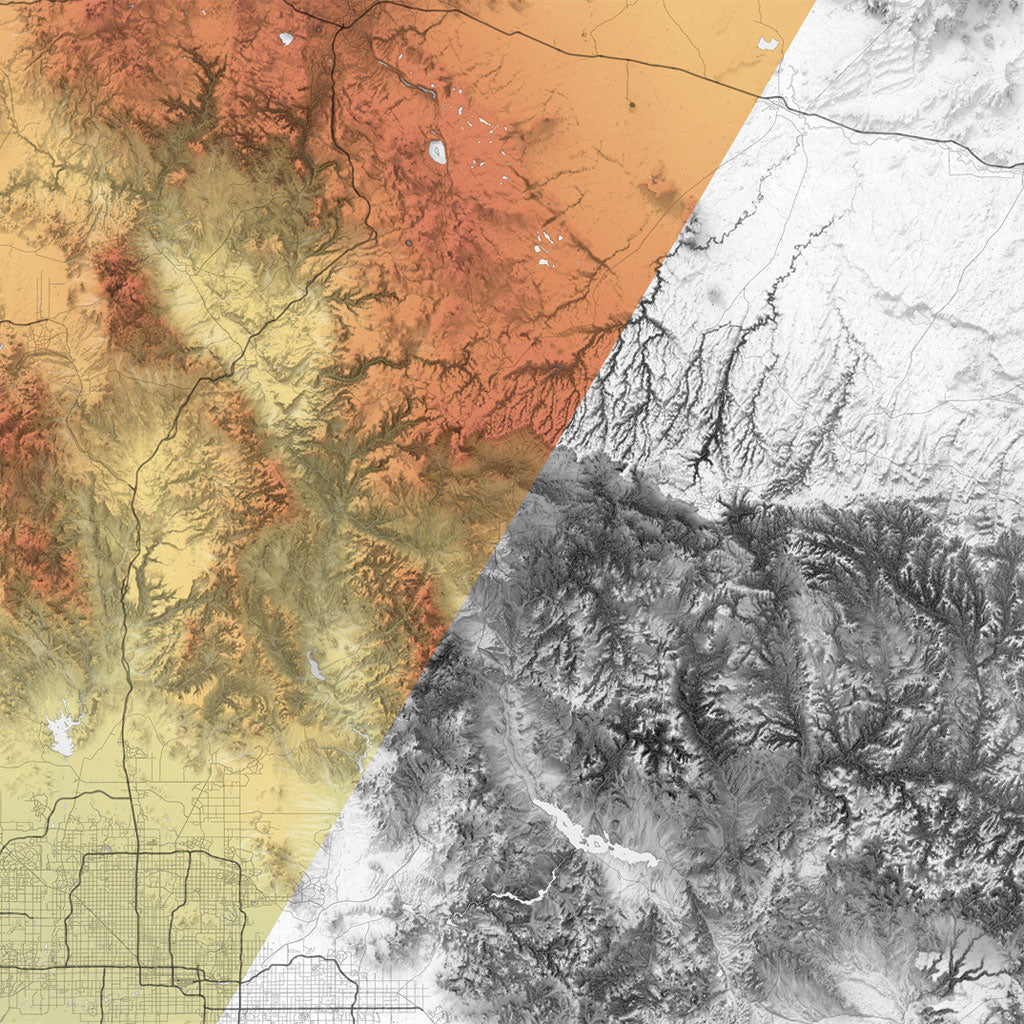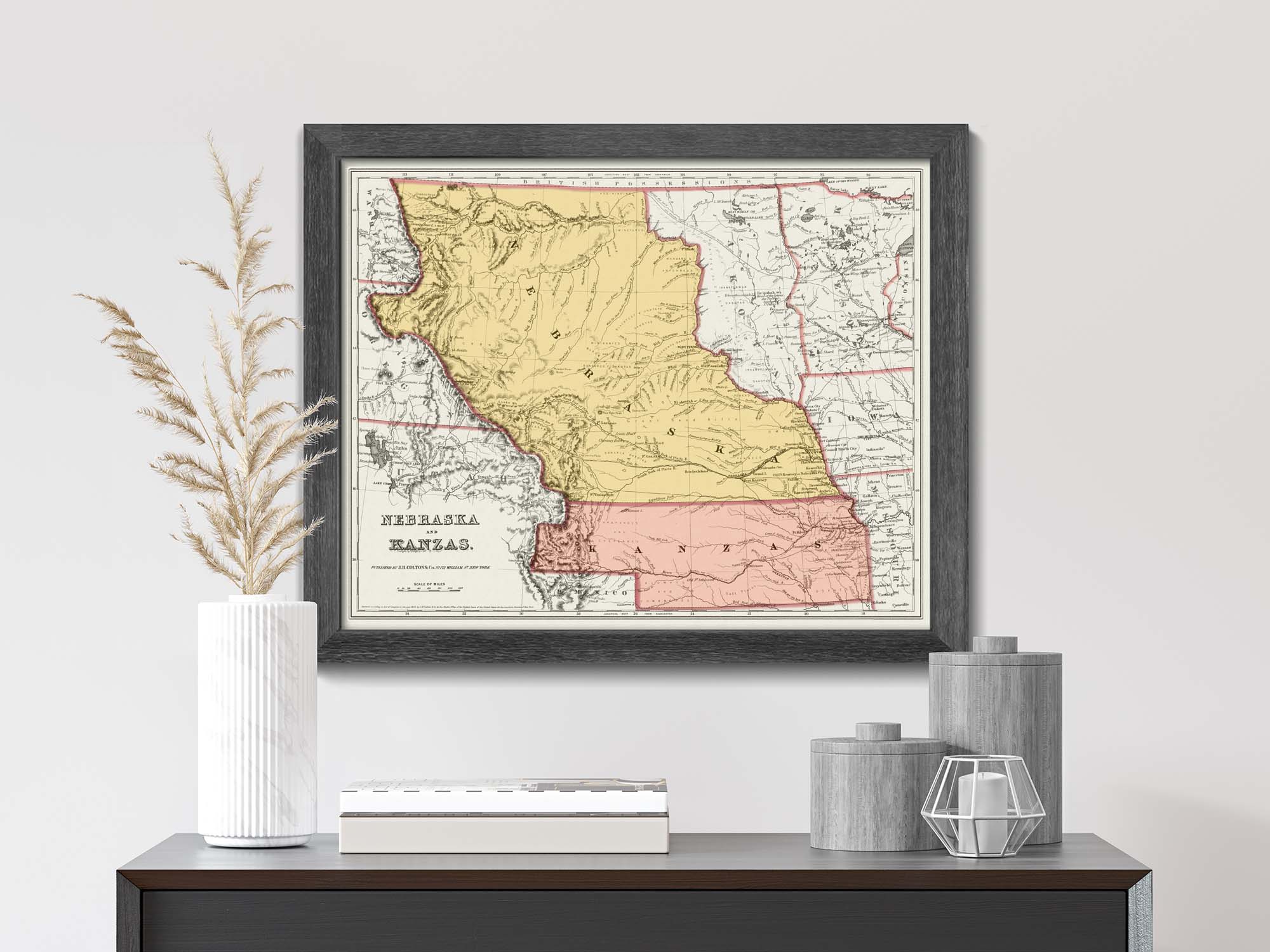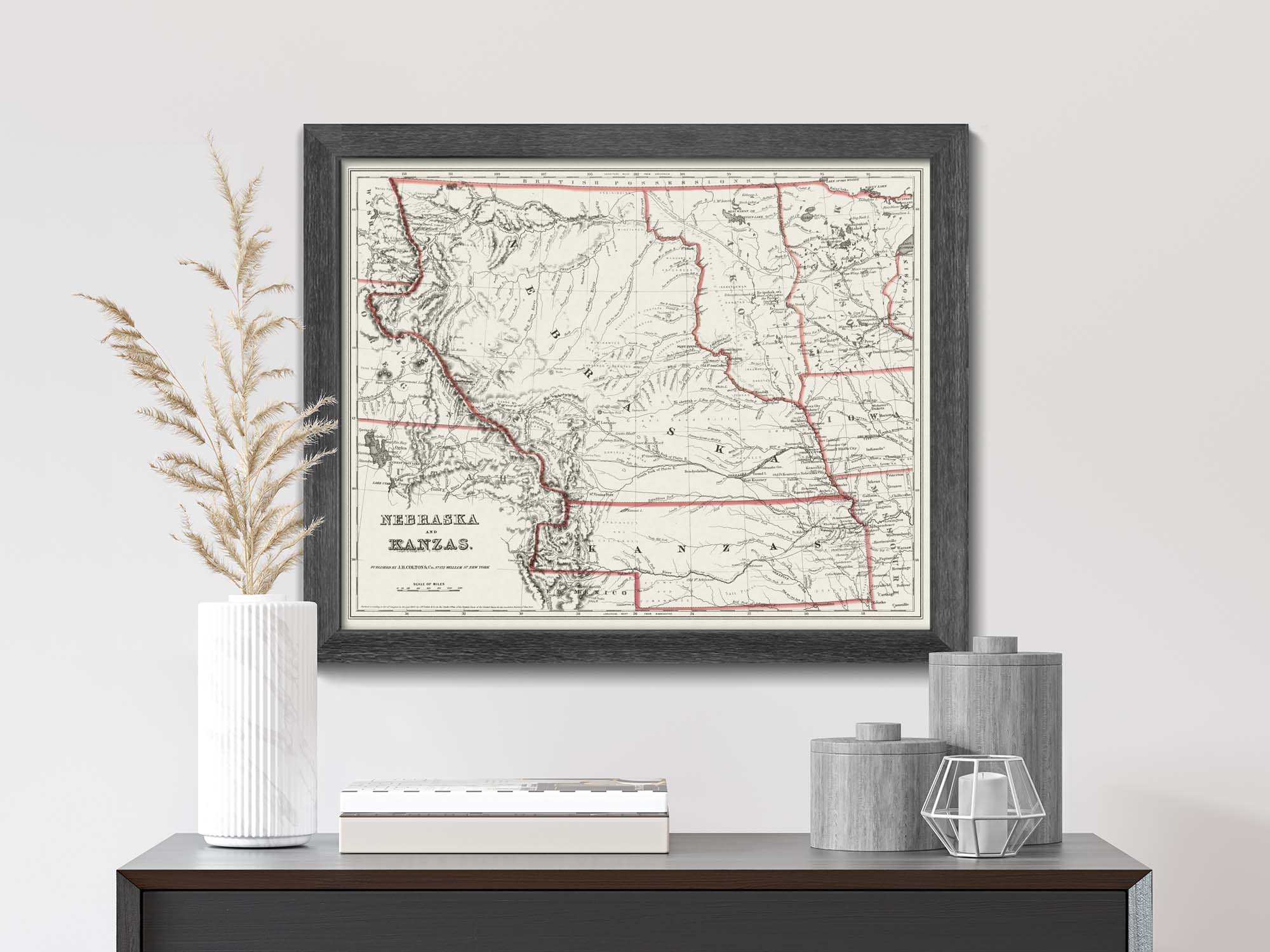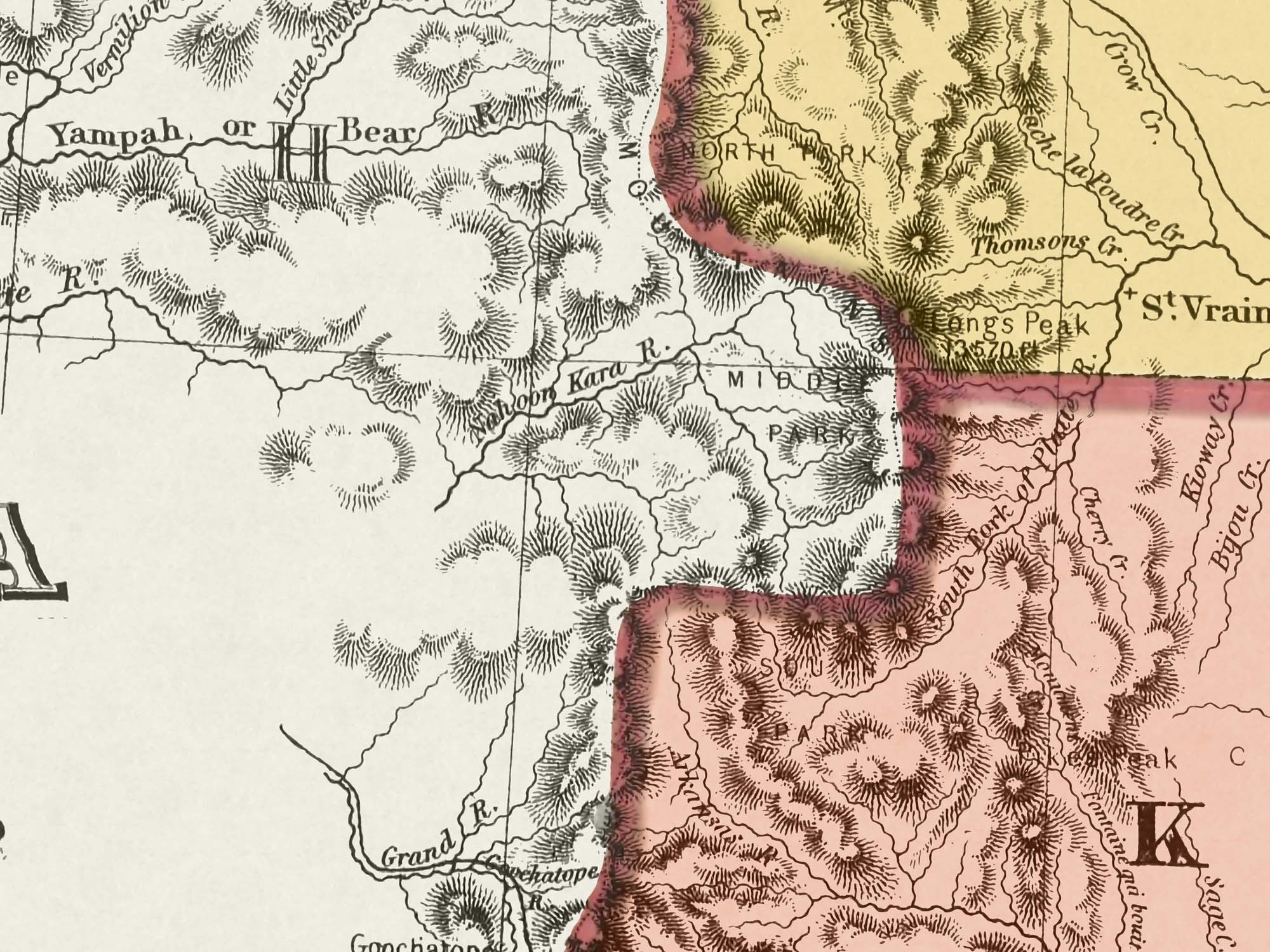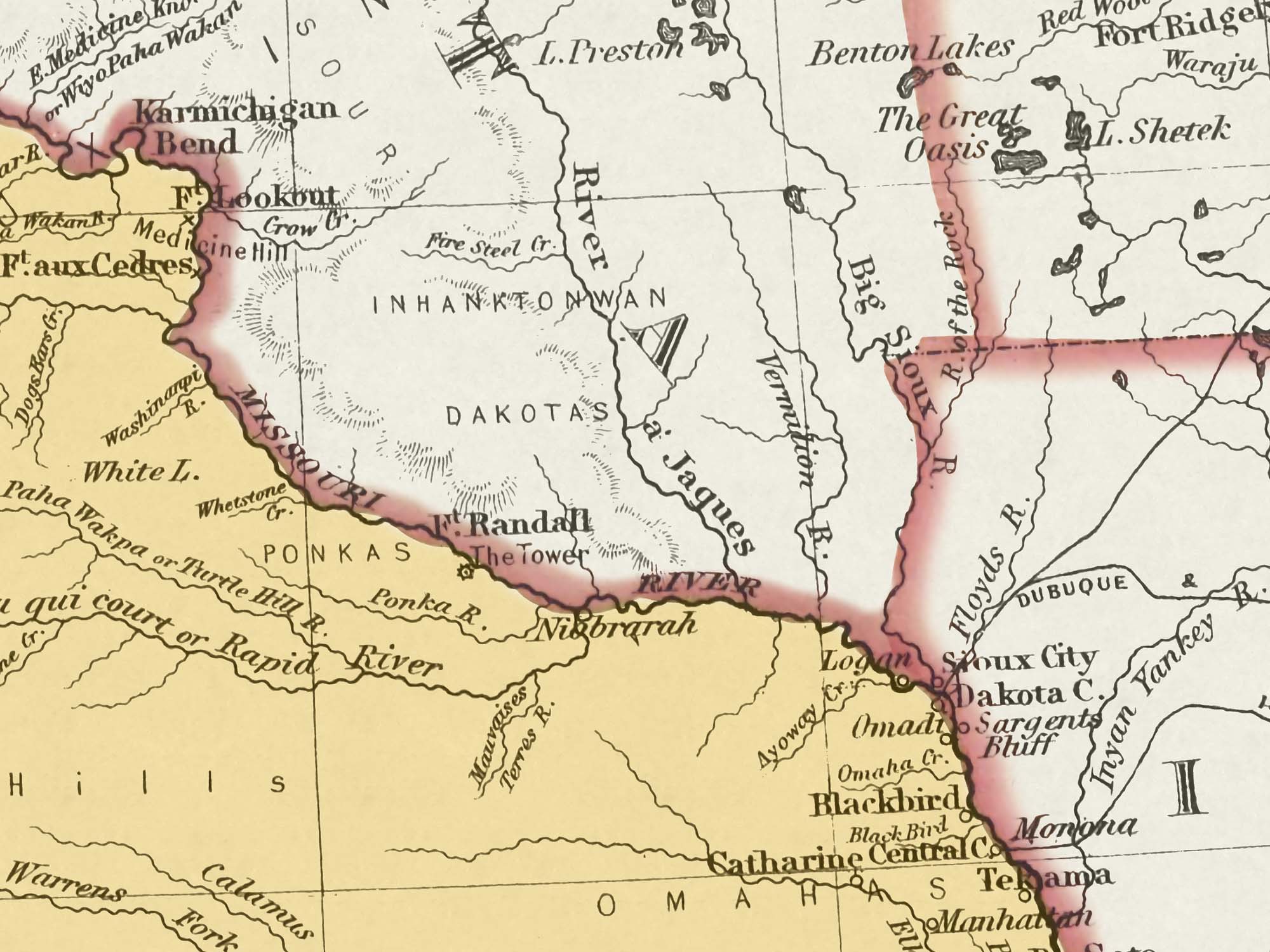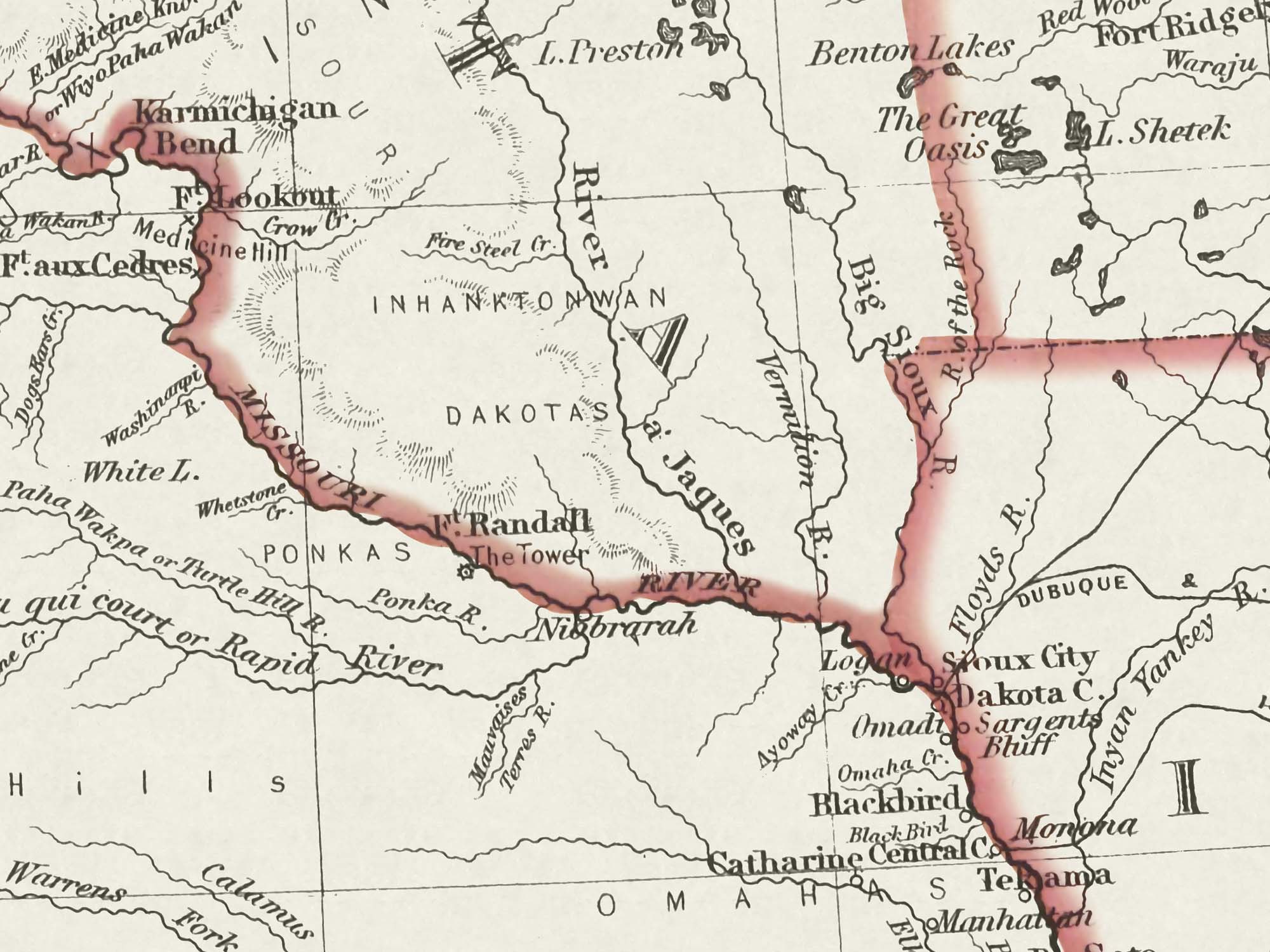This map is a faithful reproduction of the original 1850 map restored to its former glory using the latest digital imaging technology.
Vintage State of Nebraska & Kansas Map
Standard maps will enter production right away, within the next business day. Larger orders may take more time.
All push pin board maps (framed or canvas wrap) include push pins, are easy to hang, and ship free in the continental US. We'll select the optimal shipping method for fast delivery.
For personalized maps we collaborate closely to guarantee satisfaction. Expect a proof to be sent to you. Your swift responses will facilitate the production and shipping process.
If there are any problems with your map we will take care of you. Returns for all maps are straightforward and hassle-free.
For personalized maps, engaging with the email proofs we send ensures that the final product meets your expectations precisely.
We have 30+ years of cartography experience, meticulously craft each order by hand to ensure excellence, and 100% guarantee your satisfaction. We produce maps that are built to last, with state of the art production and archival quality materials.
Customize with quotes, legends, or dedications using "Personalize Map" options to craft your masterpiece map. Or reach out to us if you don't see the option you want.
We collaborate with you from design to approval of your proof so that you are 100% happy before we print and ship.
Our excellent customer service is always open to you.
Restored 1850's Map
Fine Art Quality
Impressively produced with Archival Inks, Rich Color Depth, and clear and vivid labels. We use premium matte paper.
Expert Craftsmanship
We prepare the map using Fine Art Giclee production techniques. We roll the map in a sturdy tube for shipping to provide a crease-less piece of art.
Vintage State of Nebraska & Kansas Map
- Description
- Specs & Construction
About the Map: Explore the geographic history of the state of Nebraska & Kansas in this historic map. This map is part of our vintage USA State Map Collection showing the geography of the states in the 1850-1860s and the time of the Civil War.
Restoration: The map is a reproduction of the original map meticulously restored to its former glory using the latest digital imaging technology. Using this technology, we carefully restored the colors, torn edges, creases, smeared writings and more. We enhanced features while keeping the original character and design of the map.
This map is unframed, sold as an art print. Frames are shown for illustration ONLY.
Geographic Details: This historic map shows many details of towns, roads, railroads, and waterways in the 19th century of the United States.
Shows historic cities such as Omaha, Lincoln, Wichita and more!
Explore the historic boundaries of the cities, counties, and states that have changed over the years. Discover physical changes in the geography - such as former lakes and canals used for transportation and agriculture.
Available Sizes: For an impressive display and maximum readability, choose the largest size available.
Smaller size prints make excellent wall art in groups. Please note that there is no guarantee that small text will be legible in print.
Great Gift For: Interior Designs, Teachers, History Buffs, Anniversaries, Birthdays, Friends, Family, and many more!
Production and Shipping Times: The amount of time it takes for your map to arrive depends on where you live and how fast you approve the proof if you’ve ordered a custom map. See Production & Shipping.
Quality and Guarantee: We stand behind our work and guarantee the construction and quality. Contact us if you have any problems with your map and we will coordinate to ensure you are very happy with your purchase.
Materials and Production: This reproduction is printed on Fine Art Museum Quality Paper with giclée inks. The thick paper is archival quality and acid-free with vivid color definition.
Paper details:
- 10 mil thick
- 230 gsm weight
- Museum Quality Matte finish
Made in the USA by a USA Small Business and Professional Geographer & Cartographer.
Shipped in a tube and rolled to eliminate creases.
Why choose GeoJango Maps
- We have a lifelong passion for maps, backed by 30+ years of cartography experience and Master's Degrees in Geographic Information Systems (GIS) from Penn State University and Environmental Science from the University of South Florida.
- Our incredible investment into the design of our maps results in unparalleled detail that matters: they will educate you, and grow with you as you travel the world and track your travels—where other maps miss the mark.
- We’ve built the leading map production studio in the USA and use exclusively USA-made materials. Each pin map is proudly crafted by hand, printed by us on the finest materials, mounted on museum-quality Gatorfoam, and carefully framed just for you.
History of the Time
The 1850s were a pivotal and tumultuous period in the history of Nebraska and Kansas, marked by political turmoil, territorial expansion, and the deep-seated conflicts over the issue of slavery.
Nebraska and Kansas were both territories in the process of organizing and seeking statehood during this decade. The 1850s witnessed the intense debates over whether these territories would allow slavery, which ultimately led to a series of events known as "Bleeding Kansas."
The Kansas-Nebraska Act of 1854 was a significant turning point in the region's history. Proposed by Senator Stephen A. Douglas, the act aimed to organize the Nebraska Territory and the Kansas Territory and allowed for popular sovereignty, meaning that the residents of these territories could decide whether to allow slavery through a popular vote. This repeal of the Missouri Compromise's restrictions on slavery's expansion into these territories ignited fierce controversy and reignited sectional tensions.
The events that unfolded in Kansas, particularly, came to be known as "Bleeding Kansas." Settlers from both the North and the South rushed to the territory in hopes of influencing the popular vote on slavery. The disputes escalated into violent clashes between pro-slavery and anti-slavery settlers, leading to a period of lawlessness and chaos. The violence included incidents like the Pottawatomie massacre carried out by abolitionist John Brown.
The decade also saw the establishment of important institutions and infrastructures in both territories. Towns and communities began to form, with economic activities such as agriculture and trading gaining momentum. The construction of railways and roads facilitated transportation and contributed to the region's development.
The political climate in Nebraska and Kansas during the 1850s was defined by the intense debates over slavery and its expansion. The turmoil and violence in "Bleeding Kansas" had far-reaching consequences, as the events underscored the deep divisions between the North and the South. These conflicts also had an impact on the broader national political landscape, ultimately contributing to the rise of the Republican Party and the intensification of sectional tensions that would culminate in the Civil War.
As the 1850s came to a close, both Nebraska and Kansas were poised for significant changes. In 1861, Kansas was admitted to the Union as a free state, while Nebraska followed suit in 1867. The tumultuous events of the 1850s left an indelible mark on the region's history, shaping its identity and influencing its role in the unfolding national narrative.
In conclusion, the 1850s were a transformative and tumultuous period in the history of Nebraska and Kansas, marked by the intense conflicts over slavery and their implications for the nation's future. The events of "Bleeding Kansas," the establishment of institutions, and the territories' paths to statehood all highlighted their roles in shaping the broader narrative of American history during this pivotal decade.






